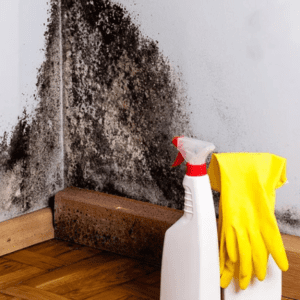Support on What to Do After Mold Remediation
Support on What to Do After Mold Remediation
Blog Article
Your Ultimate Guide to Message Mold Remediation Methods
Browsing the realm of post-mold removal strategies is a careful process that requires interest to detail and a detailed understanding of the ins and outs entailed. In the aftermath of mold and mildew invasion, knowing exactly how to successfully remove the mold and prevent its reoccurrence is vital for preserving a healthy indoor environment. From selecting the right cleaning and disinfecting approaches to implementing techniques for long-term mold avoidance, each action in the remediation trip plays a vital role in making sure an effective end result. As we embark on this expedition of post-mold removal techniques, we will certainly uncover the key approaches and best methods that can assist you restore your area to its pre-mold condition and secure it versus future mold and mildew risks.
Understanding Post-Mold Remediation Process
After finishing the mold removal procedure, it is crucial to understand the post-mold removal techniques that are essential to make sure a detailed and efficient cleaning. As soon as the mold has actually been removed, the following action entails cleaning and disinfecting the influenced areas to protect against any regrowth of mold and mildew.
Furthermore, carrying out a last assessment post-remediation is vital to make sure that all mold has actually been effectively gotten rid of. This evaluation must include a detailed visual check in addition to perhaps air tasting to validate the lack of mold spores in the air. If the assessment reveals any type of sticking around mold, extra removal might be required. Informing occupants on preventive procedures such as regulating moisture levels and quickly attending to any kind of water leaks can help maintain a mold-free setting.
Efficient Cleaning and Decontaminating Techniques

Preventing Future Mold Development

Importance of Appropriate Air Flow
Proper ventilation plays an important duty in why not check here avoiding moisture build-up, a key consider mold and mildew growth within indoor settings. Effective air flow systems assist remove excess humidity from the air, minimizing the chances of mold spores discovering the wetness they require to germinate and spread out. Without adequate air flow, indoor rooms can end up being a breeding ground for mold and mildew, causing prospective health risks and architectural damages.
By making certain appropriate air flow, ventilation systems can also assist in drying out moist areas faster after water damages or flooding occurrences, even more discouraging mold and mildew growth. Post Mold Remediation. Precede like washrooms, cellars, kitchens, and attics where wetness degrees often tend to be higher, installing and maintaining efficient ventilation systems is critical in avoiding mold and mildew infestations

Monitoring and Upkeep Tips
Given the important function that remove mold vhs tape appropriate ventilation plays in stopping mold development, it is important to develop efficient tracking and maintenance suggestions to make sure the continued functionality of ventilation systems. Regular examinations of ventilation systems should be performed to look for any kind of signs of blockages, leakages, or malfunctions that might restrain correct air movement. Tracking moisture levels within the home is also critical, as high humidity can contribute to mold and mildew development. Mounting a hygrometer can assist track moisture degrees and sharp house owners to any spikes that may call for focus. Furthermore, making sure that air filters are consistently cleansed or replaced is essential for maintaining the effectiveness of the air flow system. Applying a routine for routine maintenance tasks, such as duct cleaning and HVAC system examinations, can aid avoid problems before they intensify. By remaining conscientious and aggressive to the condition of ventilation systems, building owners can successfully minimize the danger of mold regrowth and maintain a healthy and balanced indoor environment.
Verdict
Finally, post-mold remediation methods are vital for ensuring a safe and clean setting. Recognizing the procedure, applying effective cleaning and decontaminating approaches, stopping future mold and mildew development, preserving proper air flow, and regular surveillance are all essential steps in the remediation procedure. By following these guidelines, you can effectively eliminate mold and stop its return, advertising a healthy and balanced living or working room for all passengers.
In the consequences of mold and mildew problem, recognizing just how to properly remove the mold and prevent its reoccurrence is paramount for maintaining a healthy and balanced indoor atmosphere. As soon as the mold has actually been eliminated, the next step includes cleaning and sanitizing the influenced locations to protect against any type of regrowth of mold and mold removal cottonwood mildew - what to do after mold remediation. After eliminating noticeable mold development, it is crucial to clean up all surfaces in the affected location to eliminate any type of staying mold and mildew spores. To additionally improve mold and mildew prevention procedures, it is crucial to attend to underlying concerns that initially led to mold development.Provided the vital duty that appropriate air flow plays in protecting against mold development, it is vital to establish efficient tracking and maintenance pointers to make sure the ongoing functionality of air flow systems
Report this page